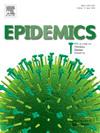Characterizing potential interaction between respiratory syncytial virus and seasonal influenza in the U.S.
IF 2.4
3区 医学
Q2 INFECTIOUS DISEASES
引用次数: 0
Abstract
RSV and seasonal influenza are two of the most prevalent causes of respiratory infection in the U.S. In this study, we used weekly positive case reports and genetic surveillance data to characterize the circulation of these viruses in the United States between 2011 and 2019 and a mathematical modeling approach to explore their potential interaction at a regional level. Our analyses showed that RSV and seasonal influenza co-circulate with different relative epidemic sizes and seasonal overlaps across regions and seasons. We found that RSV had a different evolutionary dynamic compared to seasonal influenza and that local persistence may play a role in underlying annual epidemics. Our analysis supports a potential competitive interaction between RSV and seasonal influenza in most regions across the United States. The multiple-pathogen modeling framework suggests that cross-immunity following infection of either virus might be one of the key drivers of viral competition. However, this finding is based on model-derived inferences and limited surveillance data; further investigation is needed to confirm its robustness and gain a better understanding of the underlying mechanisms. These findings underscore the importance of continued research into the immunological and ecological mechanisms of viral inference, which might be important for the development of more effective protective strategies against co-circulating respiratory viruses.
美国呼吸道合胞病毒与季节性流感之间潜在相互作用的特征
RSV和季节性流感是美国最常见的两种呼吸道感染原因。在本研究中,我们使用每周阳性病例报告和遗传监测数据来表征2011年至2019年期间这些病毒在美国的传播情况,并使用数学建模方法来探索它们在区域层面上的潜在相互作用。我们的分析表明,RSV和季节性流感共流行,不同地区和季节的相对流行规模和季节重叠程度不同。我们发现,与季节性流感相比,RSV具有不同的进化动态,并且局部持久性可能在潜在的年度流行中发挥作用。我们的分析支持在美国大部分地区RSV和季节性流感之间潜在的竞争性相互作用。多病原体建模框架表明,感染任一病毒后的交叉免疫可能是病毒竞争的关键驱动因素之一。然而,这一发现是基于模型推导的推论和有限的监测数据;需要进一步的研究来证实其稳健性并更好地理解其潜在机制。这些发现强调了继续研究病毒推断的免疫学和生态学机制的重要性,这可能对开发更有效的针对共循环呼吸道病毒的保护策略很重要。
本文章由计算机程序翻译,如有差异,请以英文原文为准。
求助全文
约1分钟内获得全文
求助全文
来源期刊

Epidemics
INFECTIOUS DISEASES-
CiteScore
6.00
自引率
7.90%
发文量
92
审稿时长
140 days
期刊介绍:
Epidemics publishes papers on infectious disease dynamics in the broadest sense. Its scope covers both within-host dynamics of infectious agents and dynamics at the population level, particularly the interaction between the two. Areas of emphasis include: spread, transmission, persistence, implications and population dynamics of infectious diseases; population and public health as well as policy aspects of control and prevention; dynamics at the individual level; interaction with the environment, ecology and evolution of infectious diseases, as well as population genetics of infectious agents.
 求助内容:
求助内容: 应助结果提醒方式:
应助结果提醒方式:


